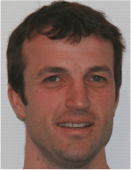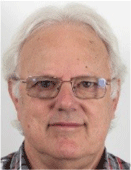New insights into the deep-water Otway Basin – Part 3. Petroleum system modelling
Oliver Schenk A E , Emmanuelle Grosjean B , Dianne S. Edwards B , Christopher J. Boreham B , Tekena West C and Alexander Karvelas DA Schlumberger GmbH, Aachen, Germany.
B Geoscience Australia, Symonston, Australia.
C Schlumberger, West Sussex, United Kingdom.
D Schlumberger, Perth, Australia.
E Corresponding author. Email: oschenk@slb.com
The APPEA Journal 61(2) 665-672 https://doi.org/10.1071/AJ20078
Accepted: 29 March 2021 Published: 2 July 2021
Abstract
The Otway Basin is a broadly northwest–southeast trending basin and forms part of a rift system that developed along Australia’s southern margin. It represents an established hydrocarbon province with mostly onshore and shallow-water offshore discoveries. However, the outboard deep-water Otway Basin, with water depths up to 6300 m, is comparatively underexplored and can be considered a frontier area. Following the completion of a basin-wide seismic depth-imaging program (Part 1) and insights from the revised seismic interpretation (Part 2), we have developed a comprehensive petroleum system modelling (PSM) study by integrating these data and findings (Part 3). Together, the studies have resulted in an improved understanding of the hydrocarbon prospectivity of the deep-water areas of the basin. Given the sparsity of data outboard, almost all legacy PSM studies have been focused either on the onshore or shallow-water areas of the basin and primarily on their thick Lower Cretaceous depocentres. The limitations of legacy seismic datasets resulted in a high degree of uncertainty in the derivative interpretations used as input into PSM studies. In addition, the paucity and poor quality of data in the deep-water area reduced confidence in the understanding of the basin evolution and spatial distribution of depositional environments through time. The newly acquired 2D seismic survey and reprocessed legacy data, with calibration via several wells across the basin, have improved confidence in our understanding of the tectonostratigraphic evolution of the basin (Part 2). The study presented herein integrates products from the work in Part 2 into a petroleum system model with the primary objective being to better understand the petroleum systems across the deep-water Otway Basin.
Keywords: Otway Basin, Austral Supersystem, petroleum system modelling, thermal history, hydrocarbon prospectivity.

Oliver Schenk is a senior basin and petroleum system modeler for Schlumberger, technically supporting New Ventures work. He has more than 14 years of experience in multidimensional applications of basin and petroleum system modelling in the international petroleum exploration industry. Since 2007, he has been affiliated with the basin and petroleum system modelling group at Stanford University, mentoring graduate students and providing occasional guest lectures. He received his Diplom degree in geology from RWTH Aachen University in Germany as well as PhD in structural geology in which he focused on fluid-assisted grain boundary migration in rocks and analogues. |

Emmanuelle Grosjean is an organic geochemist at Geoscience Australia working in the Minerals, Energy and Groundwater Division. She applies organic geochemistry to assess the hydrocarbon prospectivity of Australia’s offshore and onshore sedimentary basins. She holds a doctorate degree in organic chemistry from the University of Strasbourg, France. Before joining Geoscience Australia in 2005, she worked on the Precambrian petroleum systems of the South Oman Salt Basin as a postdoctoral associate at the Massachusetts Institute of Technology. |

Dianne S. Edwards is a principal petroleum geochemist at Geoscience Australia working in the Minerals, Energy and Groundwater Division. Her scientific focus is on defining the petroleum systems of Australia’s petroliferous basins, including both conventional and unconventional play types. She is involved in building database systems to release petroleum geochemical data via https://portal.ga.gov.au. She received her BSc (Hons) degree in geology and MSc in organic petrology and organic geochemistry from the University of Newcastle-upon-Tyne (UK). She was awarded her PhD from the University of Adelaide in 1996. In 2018, she received the Australian Organic Geochemistry Conference Medal for lifetime achievement in the field of Organic Geochemistry. She is a member of PESA. |

Christopher J. Boreham is a principal petroleum geochemist at Geoscience Australia working in the Minerals, Energy and Groundwater Division. He obtained his BSc (Hons) in chemistry from the University of Queensland and was awarded a PhD in chemistry at ANU. He has worked at Geoscience Australia for four decades. He has a wide experience in the application of organic geochemistry to the evolution of oil and gas in Australian sedimentary basins. He recently extended these geochemical studies to unconventional petroleum (coal seam methane, shale gas and oil), helium, hydrogen and abiogenic hydrocarbons, as well as being involved in CO2CRC’s studies on the injection of CO2 into a depleted natural gas field and a saline aquifer. In 2010, he received the Australian Organic Geochemistry Conference Medal for lifetime achievement in the field of organic geochemistry. He is a member of PESA. |

Tekena West is a senior exploration geoscientist for Exploration Data Europe and Africa region based in London. Tekena has a decade of industry experience in regional 2D and 3D land/marine seismic interpretation and petroleum prospectivity evaluation for exploration and development projects for sedimentary basins worldwide including the northern and southern Gulf of Mexico, North Sea, Cote d’Ivoire, Ghana, Nigeria, Angola, Mozambique, New Zealand and Australia. Tekena received his master’s degree in exploration geophysics from the University of Leeds. |

Alex Karvelas is the exploration lead for the Exploration Data Australasia region based in Perth. His role includes interpretation on depth imaging and reprocessing projects but also supporting new acquisition projects from survey design, data processing, through to final delivery. In addition to supporting live projects in Australasia, he is also actively part of the Exploration and Petroleum Systems Modelling groups that support exploration campaigns and basin hydrocarbon assessment projects around the world. |
References
Blevin, J., and Cathro, D. (2008). Australian southern margin synthesis. Project GA707, Client Report to Geoscience Australia by FrOG Tech Pty Ltd., Canberra.Boreham, C. J. (2009). Organic geochemistry – source rock characterisation. In ‘Bight Basin Geological Sampling and Seepage Survey, RV Southern Surveyor Survey SS01/2007’. (Eds J. M. Totterdell and C. H. Mitchell.) pp. 36–60. (Geoscience Australia Record 2009/24: Canberra.)
Boreham, C. J., Hope, J. M., Jackson, P., Davenport, R., Earl, K. I., Edwards, D. S., Logan, G. A., and Krassay, A. A. (2004). Gas-oil-source rock correlations in the Otway Basin. In ‘PESA Eastern Australasian Basins Symposium II, Adelaide, 19–22 September 2004’ (Eds P. J. Boult, D. R. Johns, and S. C. Lang.) pp. 603–627. (Petroleum Exploration Society of Australia.)
Bradshaw, M. T. (1993). Australian petroleum systems. PESA Journal 21, 43–53.
Charles, A., Hannaford, C., Korasidis, V., Lignum, J., Macphail, M., Mantle, D., Morgan, R., Schioler, P., and Young, M. (2019). New palynology results from legacy core and cuttings: Onshore Otway Basin, Victoria. Victorian Gas Program Technical Report 7, Melbourne.
Edwards, D. S., Struckmeyer, H. I. M., Bradshaw, M. T., and Skinner, J. E. (1999). Geochemical characteristics of Australia’s southern margin petroleum systems. The APPEA Journal 39, 297–321.
| Geochemical characteristics of Australia’s southern margin petroleum systems.Crossref | GoogleScholarGoogle Scholar |
Exon, N. F., Brinkhuis, H., Robert, C. M., Kennett, J. P., Hill, P. J., and Macphail, M. K. (2004). Tectono-sedimentary history of uppermost Cretaceous through Oligocene sequences from the Tasmanian region, a temperate Antarctic margin. In ‘The Cenozoic Southern Ocean: Tectonics, Sedimentation, and Climate Change between Australia and Antarctica’. (Eds N. F. Exon, J. P. Kennett, and M. J. Malone.) American Geophysical Union, Geophysical Monograph Series 151, pp. 319–344.
Gibson, G. M., Totterdell, J. M., Morse, M. P., Goncharov, A., Mitchell, C. H., and Stacey, A. R. (2012). Basement structure and its influence on the pattern and geometry of continental rifting and breakup along Australia’s southern rift margin. Geoscience Australia Record 2012/47, Canberra.
Karvelas, A., West, T., Nicholson, C., Abbott, S., Bernandel, G., Mitchell, C., Nguyen, D., Gunning, M.-E., Borissova, I., and Schenk, O. (2021). New insights into the deep-water Otway Basin – Part 2: Tectonostratigraphic framework revealed by new seismic data. The APPEA Journal 61, 657–664.
| New insights into the deep-water Otway Basin – Part 2: Tectonostratigraphic framework revealed by new seismic data.Crossref | GoogleScholarGoogle Scholar |
Krassay, A. A., Cathro, D. L., and Ryan, D. J. (2004). A regional tectonostratigraphic framework for the Otway Basin. In ‘PESA Eastern Australasian Basins Symposium II, Adelaide, 19–22 September 2004’ (Eds P. J. Boult, D. R. Johns, and S. C. Lang.) pp. 97–116. (Petroleum Exploration Society of Australia.)
Lee, S. Y., Lim, B. J., Anantan, A., and Karvelas, A. (2021). New insights into the deep-water Otway Basin – Part 1: integrated depth imaging workflows unravelling the subsurface. The APPEA Journal 61, 652–656.
| New insights into the deep-water Otway Basin – Part 1: integrated depth imaging workflows unravelling the subsurface.Crossref | GoogleScholarGoogle Scholar |
O’Brien, G. W., Boreham, C. J., Thomas, H., and Tingate, P. R. (2009). Understanding the critical success factors determining prospectivity – Otway Basin, Victoria. The APPEA Journal 49, 129–170.
| Understanding the critical success factors determining prospectivity – Otway Basin, Victoria.Crossref | GoogleScholarGoogle Scholar |
Romine, K., Vizy, J., Nelson, G., Lee, J. D., Baird, J., and Boyd, M. (2020). Regional 3D geological framework model: Otway Basin, Victoria. Victorian Gas Program Technical Report 35, Melbourne.
Santos. (2015). Seismic interpretation report OTSAN13R1 PSDM Reprocessing, Exploration Permit VIC/P44.
Sayers, J., Symonds, P. A., Direen, N. G., and Bernandel, G. (2001). Nature of the continent-ocean transition on the non-volcanic rifted margin of the central Great Australian Bight. In ‘Non-volcanic Rifting of Continental Margin: A Comparison of Evidence from Land and Sea’ (Eds R. C. L. Wilson, R. B. Whitmarsh, B. Taylor, and N. Froitzheim.) Geological Society of London Special Publication, 187, pp. 51–76 (Geological Society of London.)
Schenk, O., Peters, K. E., and Burnham, A. B. (2017). Evaluation of alternatives to Easy%Ro for calibration of basin and petroleum system models. 79th EAGE Conference and Exhibition, Extended Abstract.
Stacey, A. R., Mitchell, C. H., Struckmeyer, H. I. M., and Totterdell, J. M. (2013). Geology and hydrocarbon prospectivity of the deepwater Otway and Sorell basins, offshore southeastern Australia. Geoscience Australia Record 2013/02, Canberra.
Stagg, H. M. J., Cockshell, C. D., Willcox, J. B., Hill, A. J., Needham, D. J. L., Thomas, B., O’Brien, G. W., and Hough, L. P. (1990). Basins of the Great Australian Bight Region: Geology and petroleum potential. Bureau of Mineral Resources, Continental Margins Program Folio 5, Canberra.
Ting, F. T. (1978). Petrographic techniques in coal analysis. In ‘Analytical Methods for Coal and Coal Products’. (Ed C. J. Karr.) Vol. 1, pp. 3–26. (Academic Press: New York.)
Totterdell, J. M., Struckmeyer, H. I. M., Boreham, C. J., Mitchell, C. H., Monteil, E., and Bradshaw, B. E. (2008). Mid-late Cretaceous organic-rich rocks from the eastern Bight Basin: implications for prospectivity. In ‘PESA Eastern Australasian Basins Symposium III, Sydney, 14–17 September 2008’ (Eds J. E. Blevin, B. E. Bradshaw, and C. I. Uruski.) pp. 137–158. (Petroleum Exploration Society of Australia.)
Totterdell, J., Hall, L., Hashimoto, R., Owen, K., and Bradshaw, M. (2014). Petroleum geology inventory of Australia’s offshore frontier basins. Geoscience Australia Record 2014/09, Canberra. Available at https://ecat.ga.gov.au/geonetwork/srv/eng/catalog.search#/metadata/79058
Tupper, N. P., Padley, D., Lovibond, R., Duckett, A. K., and McKirdy, D. M. (1993). A key test of Otway Basin potential: the Eumeralla-source play on the Chama Terrace. The APPEA Journal 33, 77–93.
| A key test of Otway Basin potential: the Eumeralla-source play on the Chama Terrace.Crossref | GoogleScholarGoogle Scholar |


